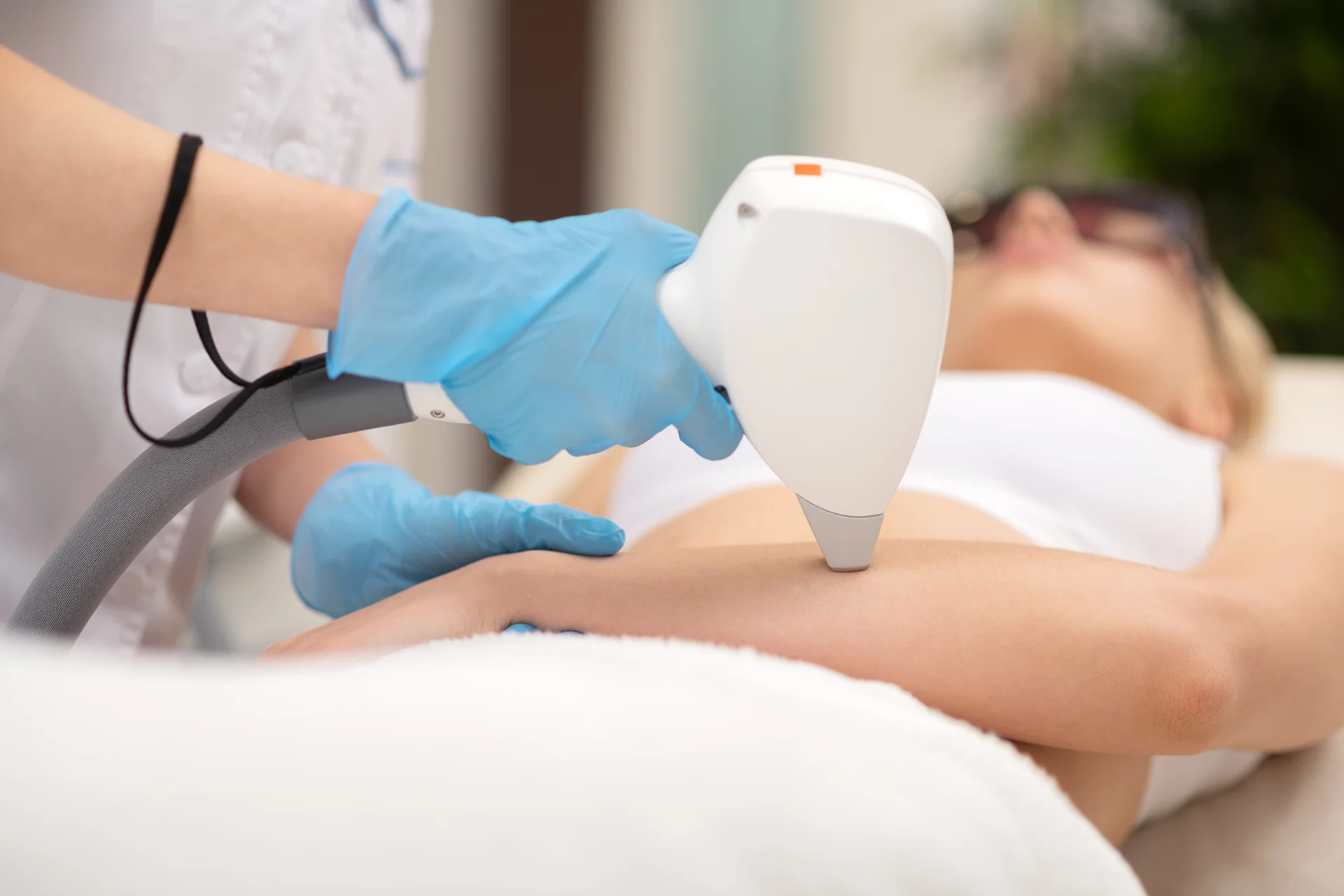Shine After the Beam: Proper Exfoliation Tips Following Laser Treatment
Smooth, hair-free skin is within reach thanks to modern laser hair removal treatments. But while lasers can permanently reduce unwanted body and facial hair, the process can leave skin feeling dry, irritated, or rough after each session.
That’s where exfoliation comes in. When done properly, regular exfoliation is crucial for revealing smoother, more radiant skin after laser hair removal treatments.
Unsure about exfoliating after laser treatment? Consult with Dr. Hardik Soni’s professionals at Ethos Aesthetics + Wellness for expert guidance.
Why Exfoliate After Laser Hair Removal?
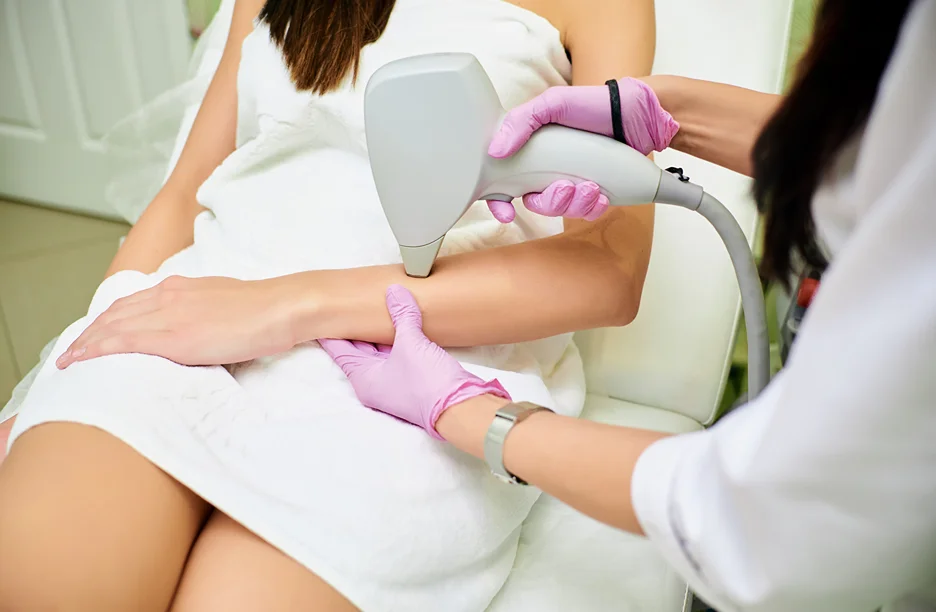
Exfoliation is the process of removing dead skin cells from the surface of the skin. It’s an important part of any skincare routine, but especially critical after laser hair removal for a few key reasons:
- Prevents Ingrown Hairs: By removing dead skin and buildup, exfoliation helps hair easily break through the surface of the skin. This prevents ingrown hairs, one of the most common side effects of laser hair removal.
- Decreases Irritation: Laser treatment can cause mild irritation and leave skin feeling tight or dry. Gentle exfoliation removes this dull layer to promote an even skin tone and help products absorb better.
- Minimizes Blemishes: Exfoliating regularly can prevent clogged pores and acne breakouts following laser sessions when dead skin cells and oil buildup are most likely.
- Enhances Results: Removing the top layer of dead cells smooths and evens texture for noticeably softer, brighter skin that shows off your laser results.
But before jumping into an exfoliation routine after laser, it’s helpful to understand exactly how laser hair removal works and what takes place beneath the skin’s surface.
How Laser Hair Removal Works
Laser hair removal uses concentrated beams of light to target and damage the root of each hair follicle. The laser’s heat essentially kills the hair follicle’s ability to regrow, slowing future hair growth.
Treatments work by pulsing the laser repeatedly over the desired area, such as the legs, face, underarms, or bikini line. The visits are scheduled around 4-6 weeks apart to target hair follicles at different growth stages.
Most patients need between 4 to 8 sessions to see the full desired results, though yearly touch-up visits help maintain smooth skin. Treatments are safe for all skin tones when performed by an experienced cosmetic dermatologist like Dr. Hardik Soni of Ethos Aesthetics + Wellness.
Immediately after laser hair removal, the skin may look and feel sunburned, swollen, or irritated. This is a normal reaction that usually subsides within a few days. Just as with an actual sunburn, skin needs diligent moisture and care while healing.
When to Start Exfoliating After Laser Treatment
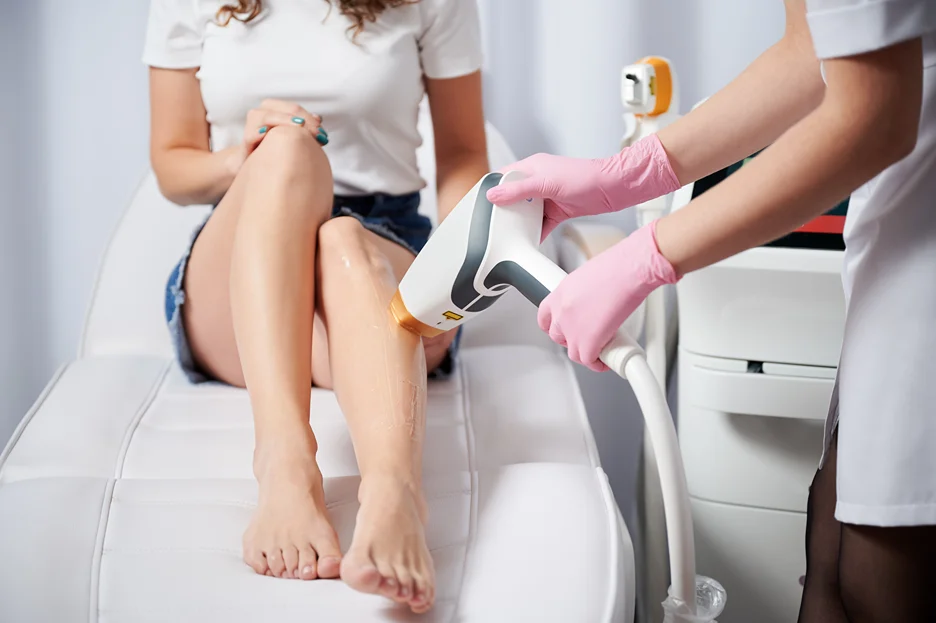
While exfoliation is crucial for revealing smooth, healthy skin after laser hair removal, it’s important not to be too aggressive too soon.
“The skin needs time to recover after each laser session before regular exfoliation,” says Dr. Soni. He recommends waiting at least one week before introducing gentle exfoliation, as this gives any initial swelling, redness, and irritation time to resolve.
Starting too soon could lead to prolonged inflammation and sensitivity. It may even compromise the skin’s protective barrier.
Dr. Soni suggests paying attention to your individual healing process:
“Every patient’s response is unique based on factors like skin type, treatment area, and laser settings. Take it slow by first doing a patch test if your skin is highly reactive. When in doubt, wait a few extra days before exfoliating to be safe.”
Once the skin is no longer painfully tender and back to normal, you can incorporate exfoliation about 2 to 3 times per week. Just be sure to discontinue exfoliating if it causes any discomfort like stinging or burning.
Chemical vs. Physical Exfoliation After Laser
There are two main forms of exfoliation suitable for use after laser hair removal:
Chemical Exfoliants
Chemical exfoliants use ingredients like glycolic acid, salicylic acid, and enzymes to gently dissolve the “glue” holding dead skin cells together. This gradually reveals fresher skin over time.
Some top chemical exfoliant picks include:
- Glycolic acid: Derived from sugar cane, glycolic acid is an alpha hydroxy acid (AHA) that penetrates easily to smooth skin texture. Start with washes or serums containing 5-8% glycolic acid before gradually increasing concentration.
- Lactic acid: Another AHA, lactic acid exfoliates while also deeply hydrating. It’s gentler than glycolic acid, making it ideal for sensitive skin.
- Salicylic acid: Salicylic acid is a beta hydroxy acid (BHA) that can penetrate and exfoliate inside pores. It helps prevent breakouts while brightening tone.
- Enzymatic exfoliants: Fruit enzymes like papaya and bromelain remove dead cells and leave skin glowing. Look for them in gentle gel or cream cleansers.
Physical Exfoliants
Physical exfoliants use gentle friction from ingredients like sugar, salt, or abrasive beads to slough off dead skin. They provide immediate, visible results.
Some handy physical exfoliant options include:
- Sugar scrubs: Sugar granules dissolve as you massage them into damp skin for smooth results without irritation.
- Microdermabrasion scrubs and pads: These offer finer exfoliation through aluminum oxide crystals that gently buff the skin’s surface.
- Soft washcloths: Simply massaging the skin with a damp, soft cloth removes some dead skin for lighter exfoliation.
- Body brushes and loofahs: Used in gentle circular motions before showering, these provide invigorating full-body exfoliation.
“Physical exfoliants provide a deeper scrub,” explains Dr. Soni. “Use them once or twice weekly as the skin tolerates, avoiding any inflamed areas.”
Common Exfoliation Mistakes to Avoid
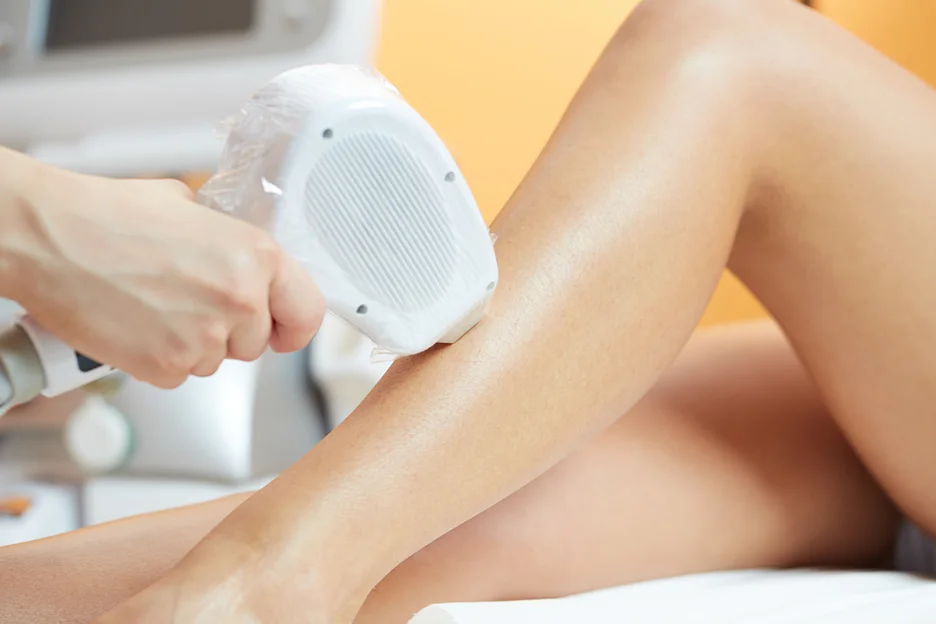
While exfoliation is beneficial if done properly after laser hair removal, certain mistakes can lead to irritation and complications. Be sure to avoid:
- Over-exfoliating: Too much exfoliation can disrupt the skin’s protective moisture barrier, causing inflammation and sensitivity. Start slow.
- Aggressive scrubbing: Rubbing the skin too hard with coarse exfoliants can cause micro-tears. Use a delicate touch.
- Exfoliating dry skin: Always exfoliate freshly washed, damp skin to avoid redness. Never scrub dry patches.
- Using harsh ingredients: Skip exfoliants with irritating dyes, fragrances, or beads that scratch. Stick to gentle acids.
- Not moisturizing after: Always follow exfoliation with a nourishing moisturizer to replenish hydration.
Dr. Soni reminds patients to “discontinue exfoliation at the first signs of irritation like itching or stinging. Allow the skin time to normalize before trying again.”
Maximize your laser treatment results with Ethos Aesthetics + Wellness. Let Dr. Hardik Soni guide you through the perfect exfoliation routine post-treatment.
Caring for Skin Based on Location and Type
Where you’re having laser hair removal and your individual skin type impact proper aftercare, including exfoliation. For the best results, Dr. Soni recommends:
Delicate Facial Skin
“Go slowly when exfoliating the face after laser hair removal,” advises Dr. Soni. Cleanse with a soft cloth and use gentle chemical exfoliating toners or serums a few times weekly, avoiding inflamed areas.
Sensitive Body Areas
On sensitive bikini areas, underarms, or other body zones prone to irritation, stick to mild exfoliation like soft scrubs or chemical exfoliants twice weekly at most.
Acne-Prone Skin
“Salicylic acid cleansers and pads help keep pores clear on oily, acneic skin,” shares Dr. Soni. Avoid harsh scrubs to prevent breakouts.
Dry Skin Types
Prioritize hydrating options like lactic acid and gentle scrubs, avoiding acids that could dry skin further. Always moisturize after to maintain the skin’s barrier.
Aging/Sun-Damaged Skin
Higher glycolic acid concentrations (10-15%) help fade brown spots and smooth wrinkles on mature skin once or twice weekly. Use a delicate technique.
When to Seek Professional Help
For most patients, at-home exfoliation is suitable after laser hair removal. But if you experience any of the following, contact your dermatologist’s office:
- Severe redness, swelling, pain, or itching
- Development of hives or a rash
- Signs of infection like oozing, fever, and warmth
- No improvements despite proper exfoliation
- Darkened patches or abnormal pigmentation
Caring For Your Skin Post-Treatment
While exfoliation is key, your entire skincare routine needs special care and attention after laser hair removal treatments.
Cleansing
Use a gentle, fragrance-free cleanser to wash treated areas twice daily. Avoid harsh soaps or scrubs that could strip your skin. Cleanse with lukewarm water, patting dry softly with a clean towel.
Moisturizing
Replenish moisture after every wash with a nourishing, fragrance-free lotion or cream. Look for soothing ingredients like aloe, ceramides, hyaluronic acid, and omegas. Keeping skin hydrated helps minimize irritation.
Sun Protection
Your skin is highly vulnerable to UV damage after laser, which could cause burns or discoloration. Apply broad spectrum SPF 30+ sunscreen to all treated areas before sun exposure. Wear wide-brim hats and protective clothing as extra precautions.
Proper Shaving Technique
Avoid shaving treated areas with razors for at least 3 days post-treatment to prevent irritation. When hair regrowth resumes, use a clean, sharp razor with a rich shave cream or oil for lubrication. Shave in the direction of hair growth and rinse thoroughly.
Skin-Calming Ingredients
Look for skincare products containing soothing antioxidants like green tea, vitamin C, niacinamide, and plant extracts. Colloidal oatmeal hydrates and calms sensitivity when applied as a mask. Ice packs provide relief to inflamed areas.
Avoiding Irritants
Steer clear of potential irritants until skin heals fully. This includes makeup, hair removal, tanning beds, hot tubs, swimming pools, harsh chemicals, and acne products. Wear loose cotton clothing over treated areas.
Healing From The Inside Out
Your diet and lifestyle impact healing. Eat antioxidant-rich fruits and vegetables, stay well hydrated, avoid alcohol, and don’t smoke. Destress through relaxation techniques like meditation, yoga, or massage. Get plenty of quality sleep.
What Results to Expect After Exfoliating
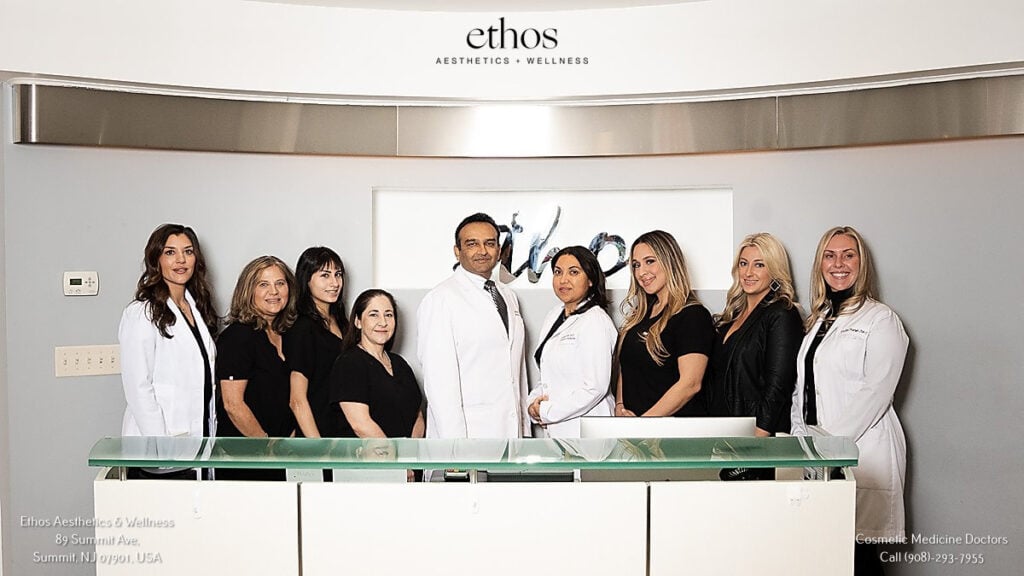
When performed properly, exfoliation enhances the smooth, flawless results of laser hair removal treatments. With regular exfoliation 1 to 3 times weekly, here is what you can expect:
- Skin that looks and feels incredibly soft, smooth and supple
- A brightened, more even complexion and skin tone
- Less noticeable appearance of minor scars or uneven texture
- Decreased appearance of dark spots and sun damage
- Smaller-looking pores as debris is cleared from pores
- Reduced ingrown hairs and razor bumps after shaving
- Improved product absorption for better hydration
- Longer time between treatments as hair regrowth slows
- Confidence to bare your beautiful, hair-free skin
Be patient through the healing process, allowing your body adequate time to respond to each laser session. Maintain realistic expectations for multiple treatments.
For exceptional laser treatment follow-up, trust Ethos Aesthetics + Wellness. Dr. Hardik Soni and his team will seamlessly integrate exfoliation into your skincare regime.

